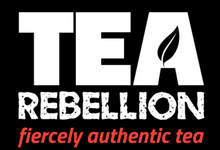
A Brief History Lesson on a Pleasant Pastime
People have been drinking tea for about five thousand years, and it is likely they have been reading the leaves of our favourite beverage for as long.
Tasseomancy is believed to have begun with the ancient Chinese, who read the residue at the bottom of their cups for patterns, signs, and omens. As tea became more popular and started to make its way around the world, so too did tea leaf reading. And in the 1600s it quickly started to outshine other, older ways for divining the future.
The earliest reference I have found documented for the lead-up and into the Art of Tasseomancy is 1610, however, some who go by the Old Testament of the Bible says that it goes back as far as the times of Joseph where there is a reference to ‘The Divining Cup’ which was believed to have originated from the ancient Egyptians. But it is more than likely it was the Babylonians as the reference of divining by cup also shows up much earlier in Babylonian texts in about 1800 B.C.
Most people who are familiar with the Art have either heard of it or experienced it through the very old custom, (and even though my research I found a book written by a woman who is only known as The Highland Seer, in the early 1900s where it is even then, called ‘a very old custom’) it’s believed to have come from the Irish and the Scots where it was called ‘Cup Tossing’.
The Art was long passed down from mother to daughter, grandmother to granddaughter, aunt to niece, etc., it was normally a family tradition. Traditionally, tea reading would be done in the morning before one would start their day to see what would unfold, or tea leaf reading would have been done in the afternoon.
By the mid-nineteenth century, porcelain manufacturers began to create Tasseography (Tasse = Cup or Goblet, Graphy = Map, or to, Graph, or Layout, or Write) cups.
These cups became quite popular in the late 1800s/early to mid-1900s where the fascination with the occult and supernatural became more popular. They were generally easy to use, and most Ladies would use them as part of an Afternoon Tea event and Ladies Tea Events, where the hostess would read the fortunes of her guests. These cups came with their own definition booklets, so the use of psychic and intuitive ability was very loosely utilized as the fortune would be determined by what symbol the leaves land on, as opposed to the true form of the art where the leaves create their own patterns, shapes, and symbols.
Tasseomancy is the Art and Practice of divination by the interpretation of symbolic patterns made by tea leaves in a teacup. (Tasse = Cup or Goblet, Mancy=Form of Divination).
Art is thought to be largely dependent on psychic intuition. Tea is poured into a cup without the use of a strainer. The one seeking psychic help, the inquirer, drinks the tea in the cup. If any moisture remains it is shaken out onto a napkin.
Another method is to leave a little moisture in the cup. This allows the leaves or dregs to be swished around. The cup is upturned into the saucer. The reader picks up the cup and begins examining the formation of the dregs. The reader would then discern the shapes the leaves would make and tell the Enquirer their fortune based on those shapes and the locations of the cup the leaves were in.
For more information about tasseomancy, or the services that Amy offers, visit her website at: https://www.taotat.ca
